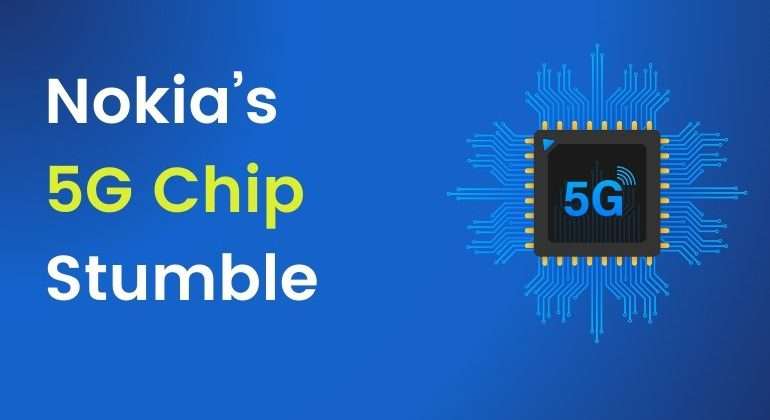The industry has seen how Finnish Equipment has played a crucial role in vendor competitiveness through its partnership with Broadcom, Intel, and Marvell in 2020. Earlier in late 2018 under Tommi Uitto’s guidance, Nokia’s System-On-a-Chip (SoC) business stumbled in the 5G domain.
Under the leadership of Veijo Kontas, who had a strong background in semiconductors, Nokia’s largest business group was expected to be back on its feet. Reiterating the same Kontas added, “We believed that we had to run like hell but had to do it smartly. In 2019, I had zero holidays!”
The issues started cropping up after the departure of Rouanne regarding the decision to use Intel. Meanwhile, purpose-built silicon based on the 10-nanometer designs was curated by the US semiconductor giant for Nokia’s 5G cellular network equipment. While there were no issues with customized chips, there were production delays when Intel came into the picture.
What Happened?
Apart from delays, many factors had a powerful impact. Firstly, Nokia’s high reliance on a single supplier. Secondly, there was a stopgap to make sure that the company had something to offer. Explaining this, Kontas said, “When we noticed that 5G was coming at a fast-paced speed, we started with FPGAs.”
FPGA, a semiconductor, is an alternative to an Application-Specific Integrated Circuit (ASIC) or SoC as a design takes nine months while an SoC takes almost two years to complete. However, the FPGA sourced by Nokia from Xilinx (now owned by AMD) eats up a lot of power and is very expensive.
By the end of 2019, the gross margin of Nokia’s network business decreased by five per cent to 29%, a remarkable drop from the previous year. As the high cost was considered the main reason in the reports, the company struggled to maintain the price and performance and lost market share.
All these factors made the team rethink their chip strategy; they moved on to pay more attention to developing advanced 5G technologies, investments in 6G, and selecting suitable chip partners for sourcing.
The Result
Reviewing and upgrading their strategies constantly, Nokia selected three chipmakers from the US. For radios, Broadcom was selected; in baseband where more computation is required, Nokia chose Intel for the Radio Access Network (RAN) functions. These are classed as layers 2 and 3. As layer 1 is the most demanding software, Marvell was selected.
By including these three leading names in their planning, the company gained confidence that all spheres are managed well by them. Apart from this, the three companies — Broadcom, Intel, and Marvell will also play a significant role in 6G development.
In the domain of suppliers, there is no need to worry as the upper layers of RAN are independent, which means that the same code can be used on different chips on the other parts of the network. Kontas said, “It is easier the higher you go. There is a general-purpose software, which is running on Linux.” The alternative options include AMD, which relies on the x86 architecture, just like Intel, and manufacturers with blueprints of Arm.
Also, since there is a strong pairing between the hardware and software in layer 1, it doesn’t get the same independence. They have their software for SoCs and in case the vendor is replaced, there would surely be rework in layer 1 and difficulty in managing Intel in layer 2 and layer 3.
In this regard, Nokia also had certain hedges-
- It has all the intellectual property related to radio waves under its ownership.
- It has abstraction layers that minimize the rewriting work on the software.
Kontas added that they are prepared to face any issues and said, “We are fully aware that things change; sometimes suppliers disappear or change, so we have software APIs that can be changed if the supplier changes. Today Nokia has an existing layer 1 solution. The market share also stabilized as FPGAs were replaced as SoS were introduced under the ReefShark brand.”
Takeaway
Currently, the company is using Marvell silicon with a cloud RAN portfolio that ensures feature parity and a purpose-built kit, which focuses on only one development track. Although there are limited chip options, both Nvidia and Qualcomm Layer 1 silicon as great alternatives to Nvidia and Qualcomm. Each company makes a great contribution in terms of software, encroaching on Nokia’s position in that sector.
In terms of manufacturing, the choices are limited to cutting-edge silicon. Concluding the same Kontas said, “Taiwan is the key today! Taiwanese foundry TSMC plays a crucial role in the market today. They are expanding the Europe and the USA.”

